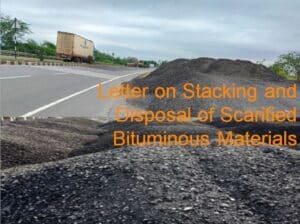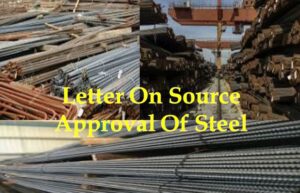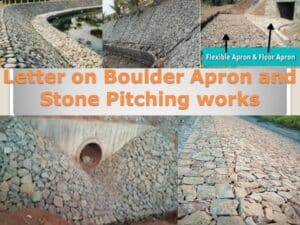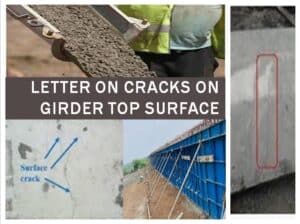Repair Procedures for Highway Elements
- The following content pertains to repair and maintenance procedures for all highway elements.
- These repair procedures for highway elements are prepared by the concessionaire and submitted to the IE for approval.
- IE can review and communicate necessary changes as per project requirements.
- Only after IE’s review and approval are these procedures eligible for implementation on the site.
The following items are included in this content “Repair Procedures for Highway Elements” for repair and maintenance:
- All elements of the carriageway, including various pavement surface distresses.
- Road Furniture
- Structure elements
Highway HTMS, Toll, and Other Project Infrastructure Elements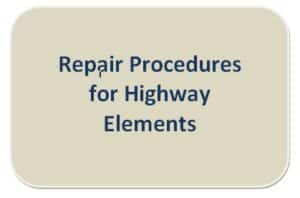
Repair Procedures for Highway Elements: Carriageway Defects
- Potholes
- Repairing Potholes Begin by using a wire or nylon brush to scrub the pothole, removing any debris. Using a blower is optional.
- Next, fill the hole with Shellmac PR, a ready-to-use patching material.
- Ensuring it’s about 20 mm above the existing road surface. Once filled, use a hand rammer to firmly pack in the material.
- Leave the patched surface around 10 mm higher than the road level. Traffic over time will help further compress it for smoothness.
- Bleeding
- Take the sand off the wheel.
- Scatter over the affected area.
- Spread out the broom evenly.
- Streaking
- Surface dressing is the best solution for this issue.
- If the problem comes back fast, we’ll use a thin overlay.
- If there are streaks over 5 square metres in any direction on the pavement, we’ll fix it. We’ll either do a fresh treat or a second time over the streaky area.
- Hungry Surface
- Ordinarily, a slurry seal is the best fix for a hungry surface.
- But when things are dire, a fog spray can be a quick solution.
- After that, proceed with the slurry seal as part of routine maintenance.
- If the damage worsens and a pothole appears, begin by repairing it. Then, do a surface drawing.
- Alligator cracks
- When there are no concaved areas, dealing with alligator cracking is as simple as using a fog seal.
- But if these cracks cause depression, we have a two-step job.
- Firstly, we apply a layer of fog sealant.
- Next, we fill the gaps with thick patching material.
- Longitudinal cracks
- If the cracks are fine and extend over large areas, we will apply fog spray as a temporary measure.
- Routine maintenance will fill the cracks.
- Slippage
- A regular upkeep routine often involves correcting slips or slides.
- Start removing the surface layer around the area.
- Keep going until a strong bond forms between the new surface and the layer underneath.
- After removing the surface layer, apply a tack coat and patch the surface.
- Rutting
- After applying the tack coat over rutting, fill ruts with densely graded patching material.
- And compact them to the desired levels.
- Treatment of rutting consists of reconstruction of the affected areas.
- We will carry out the reconstruction according to specifications. That aligns with the existing layers.
- Settlements
- The procedure involves fixing the troubled region.
- Now and then, complete checks might suggest building sub-drains as necessary.
- After conducting extensive research, it is necessary to follow advice and proceed with improvement tasks.
- Drainage
- Eliminate undesired plants either manually or with the aid of chemicals.
- Cleaning is necessary to remove any silting, loose rocks, or debris.
- If the drain is too flat and fills with sediment often, it needs a new design. We need to build it again in this case.
- If the drains are not properly aligned, we should rework and reconstruct them.
- We will address the issues of erosion and sedimentation. We can fix this by rebuilding or adding strength to the system if needed.
- We will clean out trench drains, catch basins, and filthy drains once a year. Yet, typical upkeep might dictate cleaning more or less often.
- Shoulders
Ensure compliance with the relevant MORSTH specification requirement if the shoulders, whether deformed or scoured, match the existing material and are less than 25mm from the adjacent carriageway. We must ensure that we borrow no earth from roadside land for maintenance purposes. All borrowing operations shall be as per IRC 10-1961.
- Earthen Slopes
If the shoulders are scoured or distorted and less than 25 mm from the nearby roadway, correct them by excavating, filling, dressing, and compacting a material that matches the current material, making sure that the applicable MORSTH criterion is met. We must ensure that we borrow no earth from roadside land for maintenance. All borrowing operations shall be as per IRC 10-1961.
Repair Procedures for Highway Elements: Road Furniture
Fences and guard rails
- If an accident damages the fences or guardrails, or if residents break them open, we must repair or replace them as best we can.
- You must remove the hoardings or the posters within 24 hours.
- If an incident occurs repeatedly, you should report it to the police.
- Painted advertisements shall be scraped and the surface repainted within one week of the notice date.
- We must clean and repaint corroded areas to match the existing fences.
- Guardrails, if they are painted, shall be treated in the same way as the fence described above.
Cat’s Eyes:
As part of routine maintenance, replace the damaged or missing cat’s eyes.
Road Marking:
Repairs to road markings are not possible. Only apply the road marking again if it peels off, cracks, or loses reflectance.
Road traffic signs:
- We must, to the greatest extent possible, repair any damage to the signboard face.
- If repair is not feasible, replacement is necessary.
- The supporting structure can have corrosion or breakage.
- Repairing the damage requires either welding or replacement.
- We will wash the sign board face with water and detergent and repair the bullet holes and other minor dents with self-adhesive reflective tapes.
Delineators –
If possible, repair damaged delineators; if not, replace them. Dirty delineators shall be cleaned regularly. If cleaning doesn’t resolve the issue, we recommend washing or painting them. Missing reflectors shall be replaced.
Road Lighting
Fused bulbs shall be replaced. We will repair, paint, and re-erect accident-damaged items to the best of our ability. If repairs are not feasible, we will replace them.
Repair Procedures for Highway Elements: Structure
Cleaning/Cleaning:
- We must clean the debris from over and under the structures so that the concrete or steel surface is always visible.
- Additionally, periodic vegetation removal is necessary to prevent any obstructions to the water flow.
- Silt and debris removed from the inlet and outlet areas shall be deposited and spread neatly in close proximity to the inlet and outlet areas where it cannot be washed back or, if necessary, loaded and transported to spoil at dumping areas.
Expansion Joints:
- Always keep the expansion joints on the bridges clean.
- Additionally, we will regularly remove the debris. Any rutting of the joints shall be an indication for a thorough inspection and treatment, according to the findings.
- Furthermore, reinstall any missing sliding plates on the walkways’ expansion joints.
Painting of metallic elements
Periodically paint areas that are susceptible to corrosion.
Bearing-
Replace the bearing as needed.
Parapets/Railings:
- These will be cleaned periodically.
- Any cracks will fill up, and loose nuts or bolts will tighten.
- Also, distorted elements will be repaired. We will also reinstall any missing items.
- We must thoroughly clean and paint any corroded elements. We must repair or reinstall any broken or missing concrete or masonry elements.
Drainage Spout:
- Make sure to properly lean the drainage spouts before every monsoon to prevent water logging on the deck.
- Every week during the rainy season, you should inspect the drainage spout and, if necessary, clean out any debris.
- Furthermore, you should remove any logged water from the expansion joint every alternate day to prevent deterioration.
Cracks/ Spalling-
We will repair any cracks and monitor them closely. We will arrange a thorough inspection if they reappear or widen. Any honeycombing shall be repaired.
Culverts-
- Removing blockages.
- Clean and flush the length of the pipe.
- Also, cut and remove trees and branches that threaten to fall and block upstream ditches.
- Further, establish vegetation on bare slopes at the pipe ends.
- To cover the pipe more thoroughly, add fill.
Repair and maintenance procedures for highway HTMS, tolls, and other project facility elements
Building Toll Booths:
- Every day, we will thoroughly clean the booths with a dry cloth and a broom.
- Additionally, we would repair and refinish any plaster damage to match the existing finish.
- Periodically, we will attend to operational elements such as doors, locks, and door closures.
- Further, waterproofing will require special attention. We must repair any water leak or moisture ingress through the roof, walls, floors, or window jambs.
Sub-centre and Rest Areas:
Clean up litter and debris in and around the sub-centre and wayside amenities at least once a day, or more frequently if necessary. Additionally, we will repair and re-paint any plaster damage to match the existing finish. Periodically, we will attend to operational elements such as doors, locks, and door closures.
Bus bays and shelters
Cleanup of litter and debris in and around the bus bays and shelter should occur at least once daily, or more frequently if necessary. Every day, we will sweep the pavement surface, and at least once a week, we will clean up any oil spills using sawdust, lime, and soapy water as needed.
Truck lay-bye
Clean up litter and debris in and around the truck bed at least once a day, or more frequently if necessary. Every day, we will sweep the pavement surface, and at least once a week, we will clean up any oil spills using sawdust, lime, and soapy water as needed.
Horticulture
Make a basin for each plant to hold enough water; clean by cutting and removing grass and weeds; and dispose of muck, cut grass, weeds, polythene pieces, polythene bags, cloth pieces, stones, leaves, and prunes. Trim and prune the plants to achieve the desired shape, size, and spread.
Also, water the plants as required. Further, apply manure (well-decomposed) at 1/2 cu. ft. to each plant at a time. Moreover, apply fertiliser as required. Moreover, the replacement of causalities. The task involves cutting the grass and disposing of it properly. The task also includes cleaning the ground in the median and disposing of any muck. The process involves the excavation, uprooting, and subsequent disposal of weeds. Dressing and levelling of median ground.
Repair procedures for highway elements: A Note to the Visitor
The above-stipulated repair procedures for rectify or repairing the defects or damages of project highway elements. This procedures are changed subject to the site modern day requirements and advanced rectification or repairing technologies issued by the manufactures or suppliers on specific items .
Also read NSV Report Letter: Request for program, submission, Review observations and comments
You can find various sample draft formats for highway operation and maintenance correspondence
FAQ’s related to Repair procedures for highway elements
Nil

